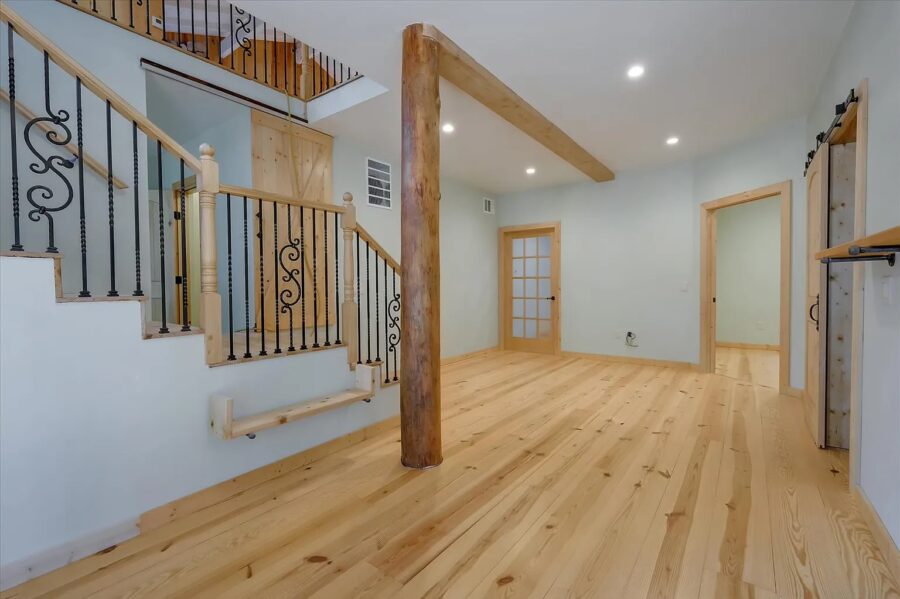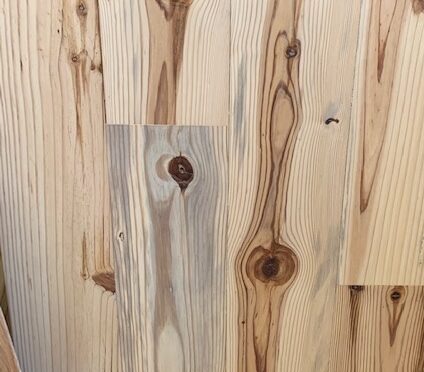If the flooring material being installed does not have specific acclimation and conditioning instructions, here are the steps to follow:
Step 1: Make sure that the heating and air conditioning units are in operation at least five days before delivery of the flooring, during installation and after the flooring is installed. If it is not possible for permanent HVAC to be operating before, during and after installation, a temporary system that mimics normal living conditions may enable installation to proceed.
Step 2: Once the facility has been confirmed to be at the expected living condition, proceed with delivery of flooring material. Check the moisture content of the wood flooring as soon as it is received at the job site. Southern Pine and Heart Pine should be at 10%- with a consistent sub floor differential.
Acclimation about moisture differential
Step 3: Check the moisture content of the sub-floor. The moisture content of the sub-floor should coincide with the temperature and relative humidity of the job-site, based on the temperature, relative humidity and average moisture content chart shown below. This moisture content reading will give you a good idea of where the conditions in the facility are being maintained and allow you to compare to the expected “in-use” conditions.
Step 4: Ensure the flooring material is exposed to the “normal” conditions of the environment in which it is being installed. To accomplish this, break the flooring units into small lots and/or open the flooring packages. Cross-stack the material with spacers between each layer to allow air circulation on all sides of all boards. Start stacking elevated from the subfloor.
Acclimation is not about time
Acclimate to equilibrium moisture content for as long as it takes. Some species will take much longer to reach equilibrium moisture content than others. It is never a good idea to base acclimation on time alone, but rather on actual moisture content.
Step 5: If the flooring material cannot be delivered to an adequate jobsite, pre-acclimation, an off-site location can work. The site must be set to mimic the expected conditions of the jobsite. Then deliver the acclimated materials to the jobsite; this is common custom floors. Again, refer to the temperature, relative humidity and moisture content chart to determine ideal conditions.
Step 6: Finally, make sure the flooring and wood subfloor moisture content is within the acceptable range for the jobsite. The subfloor should be within 4 percent for strip and 2 percent for plank wood flooring.
Equilibrium floor and sub floor.
Wood is only acclimated or conditioned once it reaches its equilibrium moisture content for the space in which it is expected to perform. Equilibrium moisture content is based on an “unchanging” environment. After a wood floor has been installed, changing conditions within the environment will change the equilibrium moisture content of the wood floor, ultimately resulting in dimensional change.
https://www.pinterest.com/sypdirect/
SYP Direct offers amazing prices with an A+ BBB rating; one in which we have held for 8 years in an industry where very few companies are even members of their local chapter. Call us today for custom prices based on your project, the location and scope. Truckload pricing available on #2 Knotty and Clear Pine, only. New Heart Pine and Caribbean Heart Pine prices will not change (as much) based strictly on volume.

Acclimation – what we hope you take away from this post; Acclimation, sometimes called conditioning, is the process of allowing wood to reach its equilibrium moisture content (EMC) within “normal living conditions.” Not properly acclimating or conditioning wood flooring may cause excessive expansion, shrinkage, dimensional distortion, or even structural damage.































